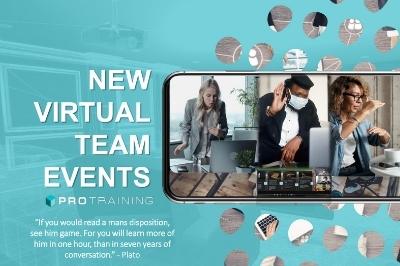What is Virtual Instructor-Led Training (VILT)?
Virtual instructor-led training (VILT), also known as virtual facilitator-led training refers to training that is delivered in a virtual or simulated environment, or when instructor and learner are in separate locations. Virtual instruction environments are designed to simulate the traditional in person learning experience. VILT is conducted by experienced and expert instructors/facilitators across a virtual environment.

New Virtual Training Solutions For Your Team
VILT is one of the fastest growing methods of internet-based learning delivery. Increases in internet bandwidth and collaboration software technologies have promoted VILT to a practical and inviting solution for reaching widely dispersed learners efficiently and cost-effectively.
Virtual instructor-led training is transforming the way millions of people learn, both on and off the job. Increasingly, businesses are employing it as part of broader blended solutions for training and development. Other common business-related uses include customer and product training, professional development, sales training and onboarding.
VILT can be unique to businesses while also offering a customisable design and experience to particular subjects or solutions. Our virtual facilitator-led team building solutions can be found here.
FACTORS OF SUCCESSFUL VILT
Within business, VILT is principally driven by the need to effectively train a growing and more dispersed population at a controllable cost. Its use enables organisations to provide valuable learning experiences for employees, customers and partners while avoiding travel and lodging costs and valuable time spent away from the job.
VILT provides an engaging experience in which participants can connect with the content and interact with both the instructor and other team mates. Successful implementations, visible through high retention rates and satisfied learners, demonstrate that VILT delivery can be both effective and efficient. Successful VILT requires the seamless interplay of three important factors: technology, content and delivery.
Technology
VILT technology is based on comprehensive and scalable collaboration software that features functionality, availability and ease of use. A full range of engagement tools typically includes live conversation, chat, polls and quizzes, all controlled and monitored by facilitators. Leading VILT platforms also incorporate tools for webinars, remote labs and video conferencing.
Content
The design of VILT programs requires a different approach than classroom or online asynchronous programs. The instructional designer must provide the instructor and student with mechanisms to communicate frequently, and must keep the content engaging and collaborative. Learning content must be developed with maximum student engagement in mind. To capture learners’ interest and promote retention, VILT must be designed around a comprehensive learning strategy. Visuals and interaction are paramount to promoting engagement and increasing training effectiveness.
Delivery
Facilitators, whether trained instructors or subject matter experts, must also be skilled communicators in order to deliver compelling VILT. The principal limitations to successful VILT implementation are the failure of facilitators to interact with students and manage their classrooms effectively.
BENEFITS OF VILT
Reduced cost. Due to the nature of VILT, travel and lodging costs can be reduced or eliminated completely.
Convenience. VILT students can choose when and where they would like to participate in training courses – whether they are at home or in the office.
Modular design. To appeal to busy professionals, many VILT programs offer training content in short, incremental modules, which can be completed independently or in combination with other courses.
Increased capacity and scalability. VILT can accommodate large numbers of professionals without increasing the amount of materials or space needed in traditional training settings.


